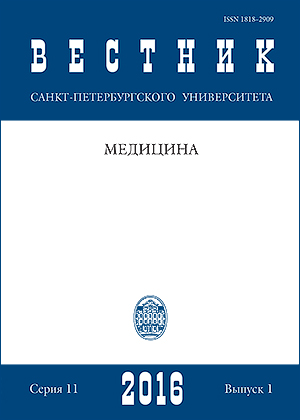ULTRASTRUCTURAL CHANGES OF KIDNEY DURING EXPERIMENTALLY MODELED THERMAL ISCHEMIA
Abstract
Nowadays the laparoscopic kidney resection is a “gold standard” for treatment of tumor stages T1–2a.
One of the most important factors is kidney thermal ischemia leading to ischemic and reperfusion damage. It’s of current importance to elaborate a nephron-sparing complex end create an eff ective algorithm for preoperative, operative and post-operative periods. Th e key problem is a choice of time interval for renal artery clamping during operation, which will not cause irreversible structural and functional kidney changes. Th e purpose of this experimental study is a detection of maximum safe time of ischemia with morphologic verifi cation via electronic microscopy. Study results show that kidney epithelium keeps vitality in 30 minutes and 60 minutes of ischemia. In 90 minutes it has irreversible cells damage (necrosis). Th erefore “the point of no return” for kidney epithelium is beyond one hour interval of thermal ischemia. In combination with eff ective pharmacologic protection this fact expands the opportunities of modern laparoscopic surgery. Refs17. Figs 8.
Keywords:
kidney thermal ischemia, electronic microscopy, malpighian tuft, ischemia reperfusion syndrome
Downloads
References
P. 31–36.
References
of Foot and Ankle Surgery, 2012, no. 51 (4), pp. 437–444.
Downloads
Published
How to Cite
Issue
Section
License
Articles of "Vestnik of Saint Petersburg University. Medicine" are open access distributed under the terms of the License Agreement with Saint Petersburg State University, which permits to the authors unrestricted distribution and self-archiving free of charge.




